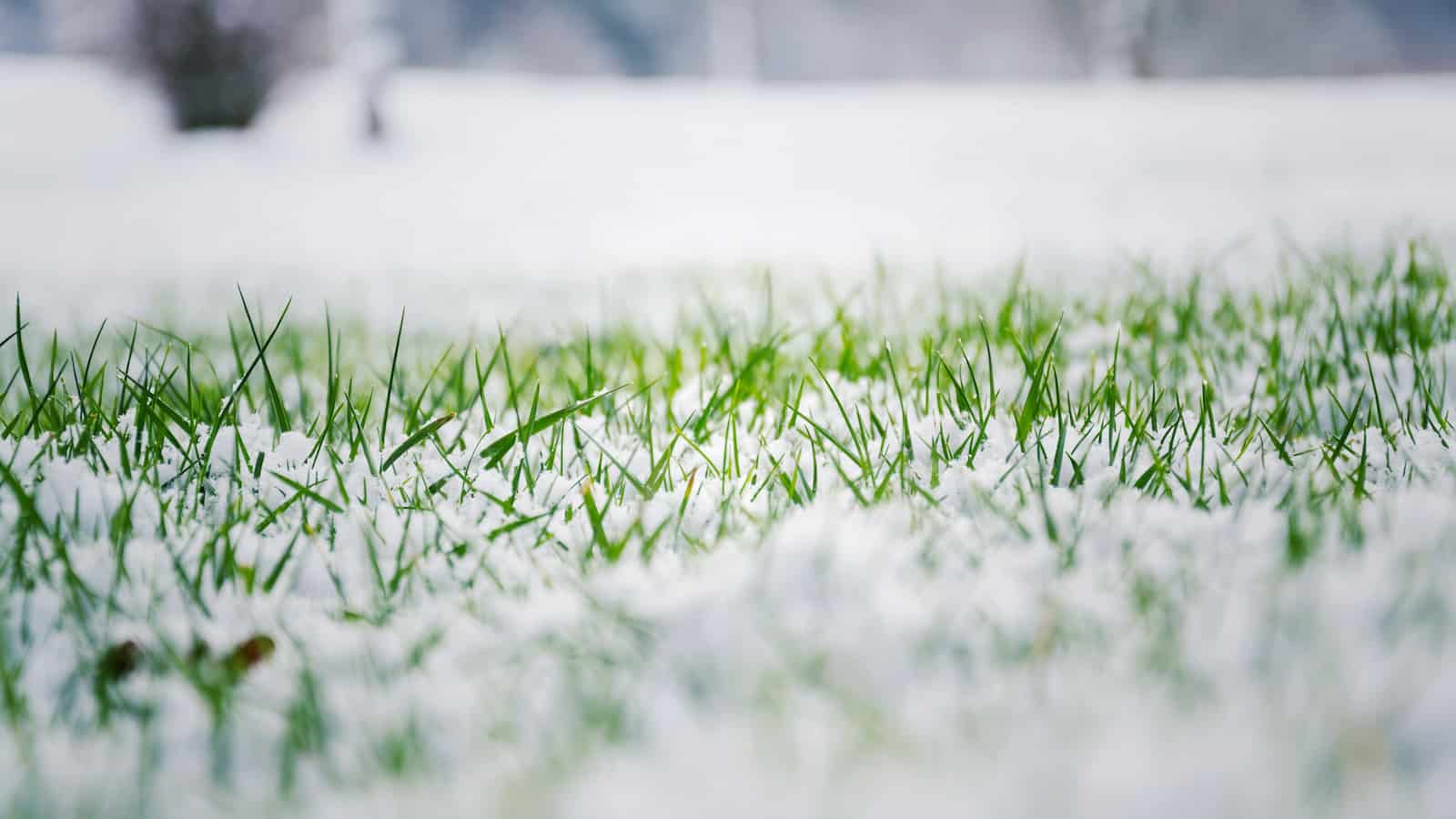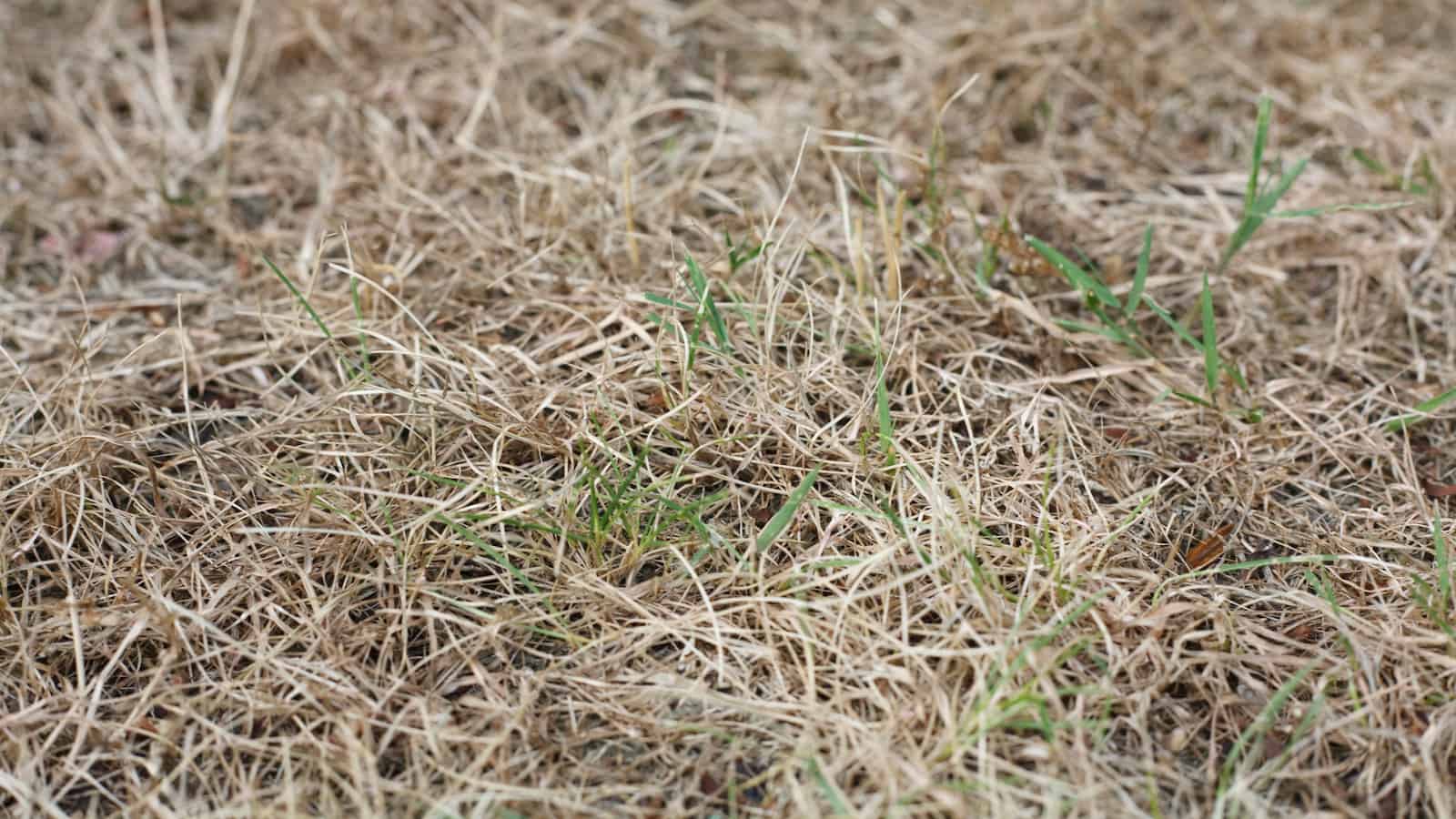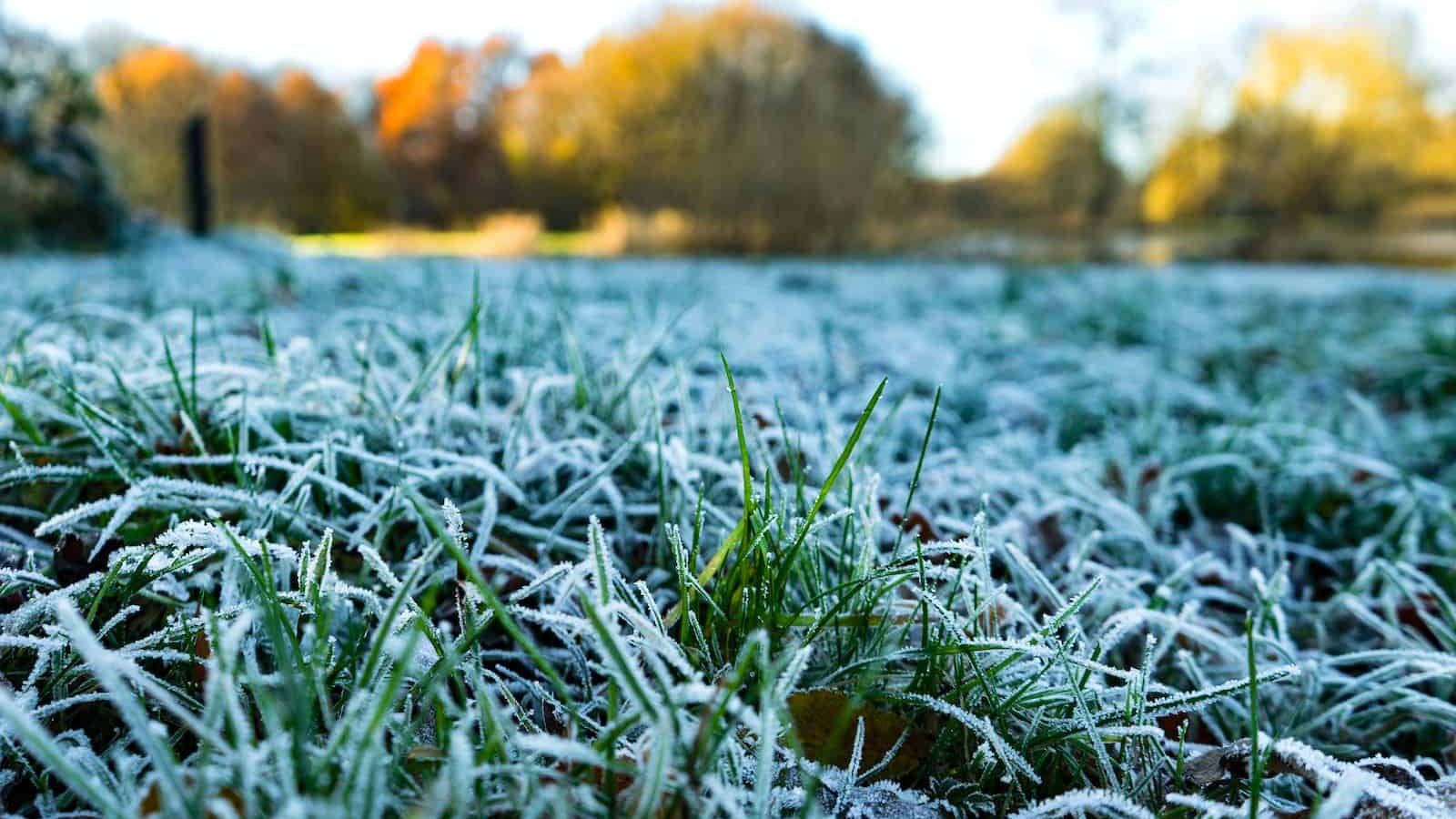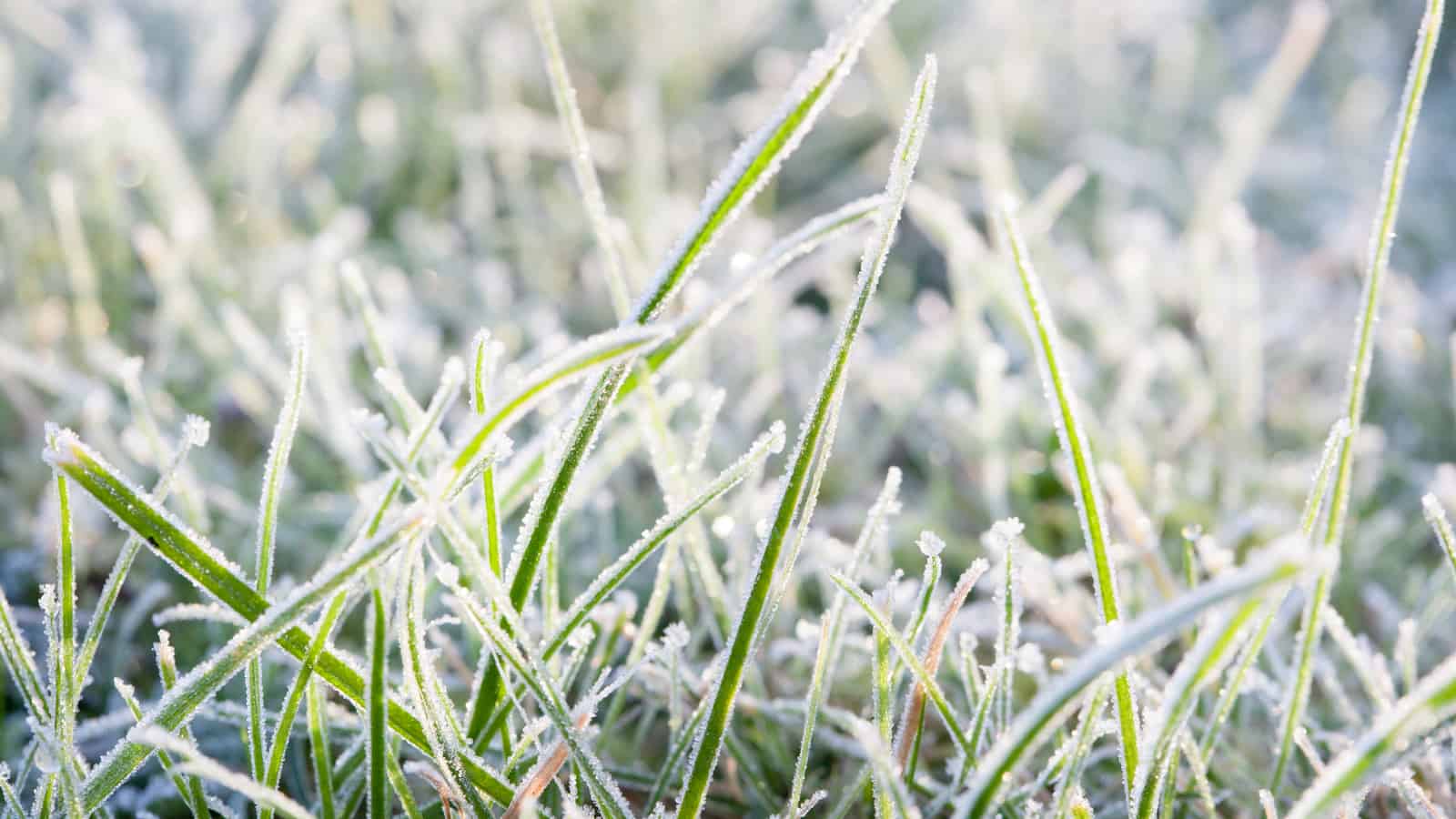Wintertime can be extremely harsh on your lawn. It deprives the soil and grass roots of much-needed nutrients and moisture.
While nature is typically well-prepared to make it through even the most challenging conditions, sometimes your spring lawn may not be as lively as you had hoped once it thaws out.
Grass can die during the winter. However, more often than not, the death of your grass is due to multiple factors, not just cold temperatures and snow.
If you are concerned about your lawn care upkeep once things finally heat up, here are some easy ways to determine whether your grass needs to be repaired or replaced.
Does Grass Die in the Winter?

The answer to this lawn care question isn’t as black and white as you might think. For the most part, grass doesn’t typically die during the winter months – it simply goes dormant. This is for self-preservation during times when there is a lack of nutrients and moisture required for growth and necessary for staying alive.
With that said, grass – even different variations like Bermuda grass, zoysia grass, or centipede grass, – can die during the winter for numerous reasons, commonly referred to as “winter kill.” The most common reasons for dead grass during the cold weather include:
- Not enough snow to insulate the grass during the winter season – Snow coverage can act as a protective barrier for your grass, keeping it alive during cooler conditions.
- Development of snow mold – Snow mold is a fungus that grows on grass once the snow and ice start to melt.
- Rodent and pest activity – Insects and other critters like voles can utilize your lawn and debris for shelter during the winter, giving it easy access to your grass and roots.
The good news is, most of the time dead grass only comes in small patches and can be cleaned up and repaired with a little maintenance and TLC.
How to Tell: Dead Grass vs. Dormant Grass

Now that we know both options are possible, it is essential to have the ability to determine whether or not your springtime grass is simply lying dormant or has been destroyed by the elements.
How to Tell if Your Grass Is Dormant
Although dormant grass can have a similar appearance to dead grass, there are some significant differences between the two that will make it easy to identify what situation you are dealing with.
The Good Ole Tug Test
To determine if your grass is simply in a dormant state, pull up on a single section. If there is some resistance, then you are most likely dealing with dormant grass.
The Entire Yard Looks the Same
Dormant grass will usually be unified throughout the entire lawn with a matching appearance. If the whole area is yellow or “dried out,” it’s probably not dead.
What Time of Year Is It?
Let the weather be your guide. If the grass conditions only changed as the temperatures dropped, it is probably due to dormancy. Once the temperatures rise, the trouble spot should start to improve.
Water Your Lawn
If your lawn is in a state of dormancy, it is because it lacks crucial moisture for the grass to thrive. Once water is applied, the grass should begin to look up, and the color should return to normal.
How to Tell if Your Grass Is Dead
If you are preparing for spring clean-up and have that uneasy feeling that you’re dealing with some dead grass, there are multiple ways to identify if this really is the case.
The Good Ole Tug Test (Part 2)
Pull on the grass. If it doesn’t give any resistance and lifts right up, that means the roots are dead and there is no saving that area.
Discolored Patches
Another identifying detail of dead grass is if the darker areas you are concerned with are found in patches. Dead grass doesn’t typically affect large spaces or an entire lawn and is frequently seen in various sections.
Hydration Doesn’t Help
Unlike dormant grass, watering the lawn is going to make no difference whatsoever if the grass is dead. Take a few days to hydrate the area and see if it makes any difference.
You have a Grub Infestation
If you notice grubs hanging out on or underneath the soil, it is pretty safe to assume that they were a huge factor in the issue at hand and will need to be cleared out before healthy grass can grow in that location.
The Ground Feels Spongy and Bouncy
If you walk across the lawn and the soil feels spongy and bouncy rather than crisp and crunchy, it is safe to assume the roots have been destroyed and the grass is dead.
Comparison at a Glance
If you aren’t sure whether your grass is in a dormant state and just needs a little extra care, or if it is dead and requires extensive treatment and regrowth, here is a side-by-side guide.
| Dormant | Dead |
|---|---|
| Crisp and crunchy texture | It has a squishy or spongy texture |
| Large area coverage | Small patches or circles |
| It gets better when hydrated | Water doesn’t make a difference |
| Gives resistance when you try to pull up on a patch of grass | Lifts right up off the ground when pulling on a patch of grass |
| The grass looks brown or yellow | The grass is brown or yellow with pink, white, black, or red mixed in (mold) |
Tips for Keeping Your Lawn Healthy Throughout the Winter

To keep your lawn healthy and safe during the colder months, there are a few things you can do to prepare properly. Below are a few great tips and tricks to keep your grass thriving all winter long.
- Apply winter fertilizer in early fall
- Aerate your grass before winter
- Overseed in the spring
- Reseed bare or patchy spots in the fall
- Pull established weeds and treat with herbicides
Summing Things Up
While your grass can die during the winter, healthy, well-maintained, and thriving lawns can typically withstand the cold months.
They’re simply lying dormant, peacefully waiting for the sun to return and the temperatures to rise.

